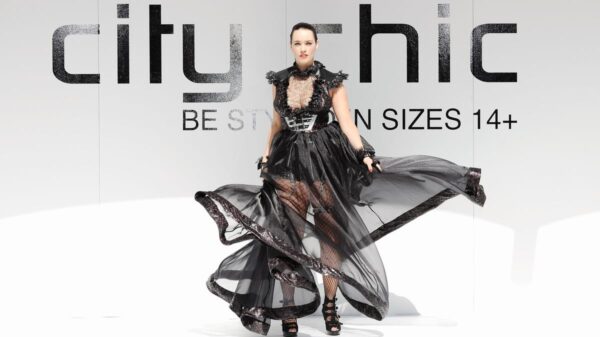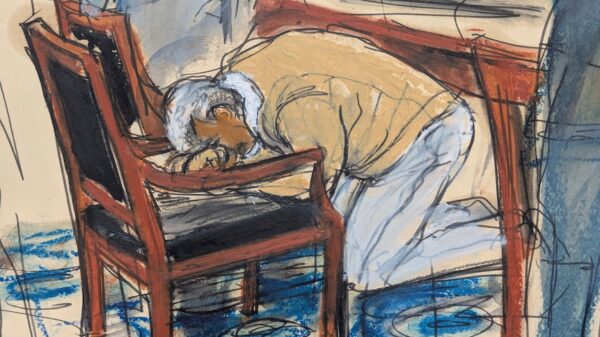The winter season of 2024-25 witnessed a notable revival of fur clothing, both genuine and faux, across Europe and North America. Shearling jackets and vintage “Penny Lane coats” have emerged as significant trends, sparking discussions about the implications of this resurgence. Despite decades of advocacy against fur, particularly from the influential anti-fur movement of the 1980s, many young consumers are embracing the trend, marking a stark shift in fashion priorities.
The anti-fur movement has long shaped public perceptions. In the 2010s, major cities such as New York and Los Angeles enacted bans on the sale of fur garments. Similarly, the United Kingdom prohibited the farming of fur-bearing animals and has committed to strict regulations against fur imports, alongside the European Union. In 2023, debates even arose in Worthing, England, concerning whether the mayor should don ceremonial robes trimmed with fur. Despite these restrictions, a segment of the younger demographic has gravitated toward real fur, seeing it as a statement of style and sustainability.
Historically, fur has represented status and luxury. While the counterculture of the 1960s saw a rise in animal skin garments, fur predominantly symbolized wealth and femininity throughout the 20th century. By the 1980s, however, advertising campaigns began portraying fur wearers negatively, leading to a sharp decline in its popularity. Anti-fur protests in the United States in 1994 exemplified the growing backlash against fur fashion. This renewed interest in fur today injects fresh relevance into long-standing debates about ethics and consumerism.
The Boom Boom Trend and Cultural Implications
The current fashion landscape is characterized by the “boom boom” trend, which emphasizes excess and unapologetic opulence. Observers have described this movement as “over-the-top” and indicative of a desire for extravagance. As fur re-emerges, it serves as a reminder of the moral complexities surrounding luxury and consumer desire. Young consumers are now faced with choices between faux fur, which avoids animal cruelty, and real fur, which some advocate as a more sustainable option. Proponents of vintage fur argue that it embodies sustainable consumption, while critics contend that endorsing any fur fashion ultimately normalizes animal exploitation.
This contemporary embrace of fur reflects a phenomenon reminiscent of the conspicuous consumerism of the 1980s. In an era marked by economic challenges, many young individuals are using fashion to express their desires, often regardless of their financial realities.
A Global Perspective on Fur Trade
The history of fur extends far beyond Western fashion trends. The decline of fur-bearing animal populations in North America and Siberia in the early 19th century sparked a global expansion of fur farming. From the 1850s onward, Central Asia emerged as a key supplier of furs to Western markets. Artisans produced exquisite karakul lamb pelts, which became highly sought after in Europe and North America.
The repercussions of historical events, such as the Russian Revolution of 1917, further shaped this trade. Many pastoralists migrated to Afghanistan, heightening the significance of karakul fur in the country’s economy. By the 1960s, Afghan sheepskin coats, colloquially known as “Afghans,” gained popularity among Western celebrities, including Brian Jones of the Rolling Stones. The fashion magazine Vogue featured Afghan socialite Safia Tarzi in 1969, amplifying the allure of Afghan fashion.
Despite the anti-fur campaigns of the 1980s, which contributed to a declining market for karakul, the demand for fur persisted. In the 1990s, civil unrest in Afghanistan severely impacted the fur industry, though some pelts continued to reach auction houses in cities like Frankfurt, Copenhagen, and Helsinki. International development organizations attempted to revitalize the trade in the 2000s, but sales remained far below their peak levels.
Today, promotional materials from fashion houses occasionally reference the historical ties of fur to Afghanistan, yet discussions surrounding fur fashion often overlook its broader cultural and economic implications. As fur clothing makes a comeback, it invites renewed scrutiny of its ethical dimensions and historical roots.
Research for this article was conducted by Magnus Marsden, who received funding from the Arts and Humanities Research Council.



























































